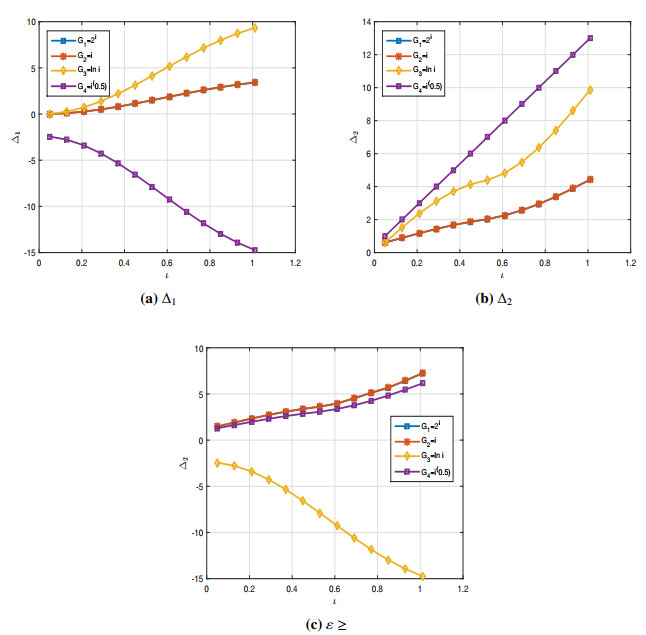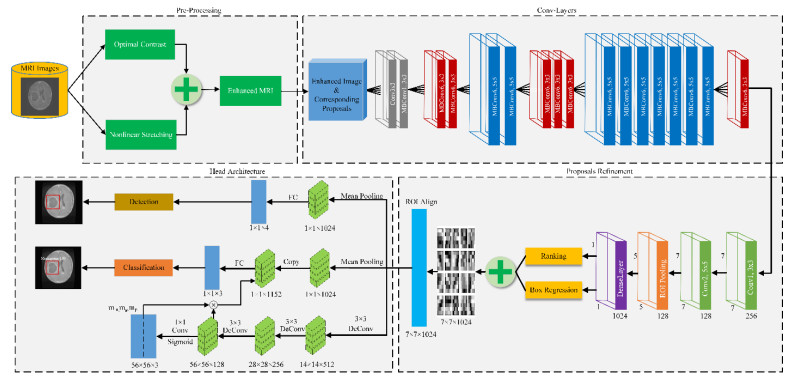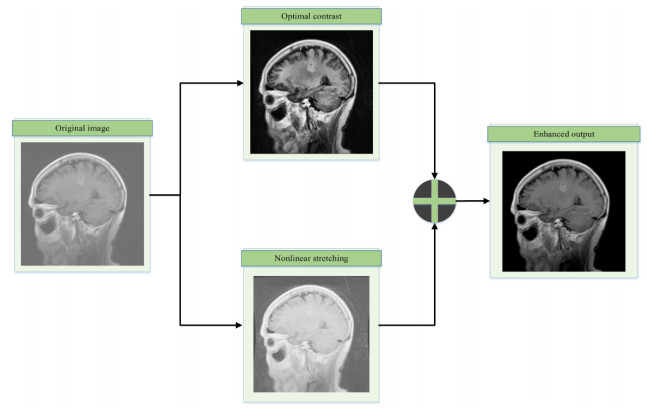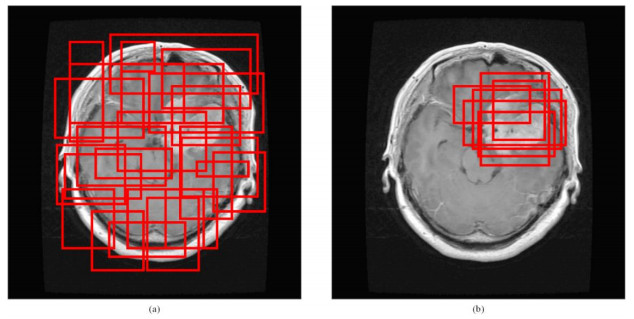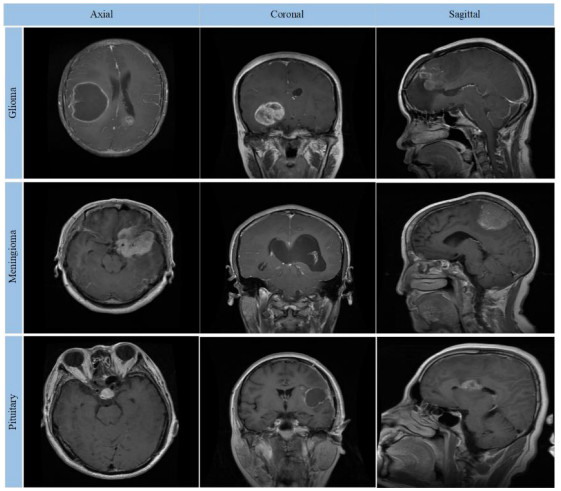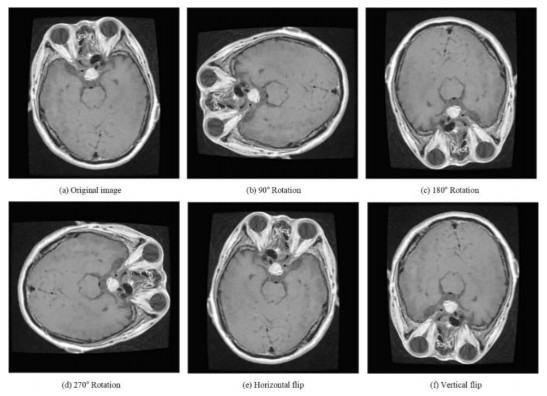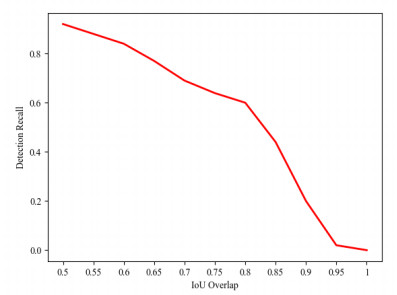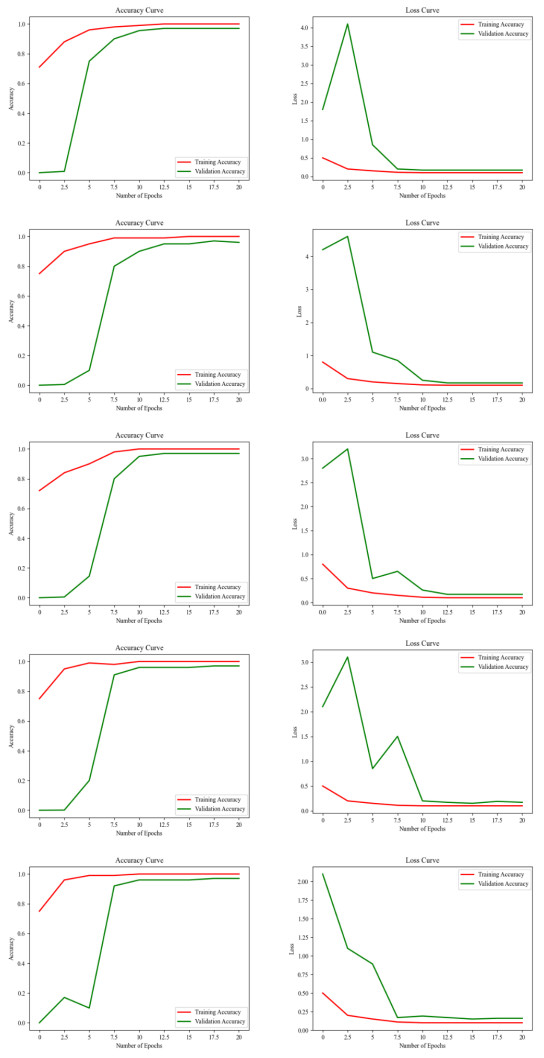| 2 format short; |
| 3 syms v e; |
| 4 q_1=0.83; q_2=0.36; p_1=0.92; p_2=0.45; |
| 5 r_1=0.12; r_2=0.87; s_1=0.54; s_2=0.27; |
| 6 iota_1=0.05; iota_2=0.95; |
| 7 G1=2^v; G2=v; G3=log(v); G4=sqrt(v); |
| 8 g_10=v/2; g_20=sqrt(v); |
| 9 g_11=v^2/5; g_21=3*v/2; |
| 10 g_12=v/sqrt(2); g_22=sqrt(v)/7; |
| 11 g_13=sin(v*pi); g_23=cos(v*pi); |
| 12 mathrmv_1=int(g_10, v, iota_1, iota_2); |
| 13 mathrmv_2=int(g_20, v, iota_1, iota_2); |
| 14 mathrmu_1=int(g_11, v, iota_1, iota_2); |
| 15 mathrmu_2=int(g_21, v, iota_1, iota_2); |
| 16 mathrmw_1=int(g_12, v, iota_1, iota_2); |
| 17 mathrmw_2=int(g_22, v, iota_1, iota_2); |
| 18 mathrmx_1=int(g_13, v, iota_1, iota_2); |
| 19 mathrmx_2=int(g_23, v, iota_1, iota_2); |
| 20 ell_1=5/36; ell_2=1/(5*sqrt(3)); |
| 21 ell=max(ell_1, ell_2); |
| 22 h_1_0=5/36+1/(36*(1+sqrt(7))); |
| 23 h_2_0=1/(5*sqrt(3))+1/(18*(1+sqrt(15))); |
| 24 %G1 |
| 25 t=iota_1; |
| 26 column=1; |
| 27 nn=1; |
| 28 while t < =iota_2+0.08 |
| 29 MI(nn, column) = nn; |
| 30 MI(nn, column+1) = t; |
| 31 Phi_1=(eval(subs(G1, {v}, {iota_2}))... |
| 32 -eval(subs(G1, {v}, {iota_1})))^(q_1+p_1+r_1+s_1)... |
| 33 /gamma(q_1+p_1+r_1+s_1+1)+(eval(subs(G1, {v}, {iota_2}))... |
| 34 -eval(subs(G1, {v}, {iota_1})))^(p_1+r_1+s_1)... |
| 35 /gamma(p_1+r_1+s_1+1)+(eval(subs(G1, {v}, {iota_2}))... |
| 36 -eval(subs(G1, {v}, {iota_1})))^(r_1+s_1)... |
| 37 /gamma(r_1+s_1+1)+(eval(subs(G1, {v}, {iota_2}))... |
| 38 -eval(subs(G1, {v}, {iota_1})))^(s_1)/gamma(s_1+1); |
| 39 MI(nn, column+2)=Phi_1*ell_1; |
| 40 MI(nn, column+3)=Phi_1*ell_1 < 1; |
| 41 Phi_2=(eval(subs(G1, {v}, {iota_2}))... |
| 42 -eval(subs(G1, {v}, {iota_1})))^(q_2+p_2+r_2+s_2)... |
| 43 /gamma(q_2+p_2+r_2+s_2+1)+(eval(subs(G1, {v}, {iota_2}))... |
| 44 -eval(subs(G1, {v}, {iota_1})))^(p_2+r_2+s_2)... |
| 45 /gamma(p_2+r_2+s_2+1)+(eval(subs(G1, {v}, {iota_2}))... |
| 46 -eval(subs(G1, {v}, {iota_1})))^(r_2+s_2)... |
| 47 /gamma(r_2+s_2+1)+(eval(subs(G1, {v}, {iota_2}))... |
| 48 -eval(subs(G1, {v}, {iota_1})))^(s_2)/gamma(s_2+1); |
| 49 MI(nn, column+4)=Phi_2*ell_2; |
| 50 MI(nn, column+5)=Phi_2*ell_2 < 1; |
| 51 Phi=max(Phi_1, Phi_2); |
| 52 MI(nn, column+6)=Phi; |
| 53 MI(nn, column+7)=Phi*ell; |
| 54 MI(nn, column+8)=Phi*ell < 1; |
| 55 M_10=int(abs(g_10), v, iota_1, t); |
| 56 MI(nn, column+9)=M_10; |
| 57 M_11=int(abs(g_11), v, iota_1, t); |
| 58 MI(nn, column+10)=M_11; |
| 59 M_12=int(abs(g_12), v, iota_1, t); |
| 60 MI(nn, column+11)=M_12; |
| 61 M_13=int(abs(g_13), v, iota_1, t); |
| 62 MI(nn, column+12)=M_13; |
| 63 M_20=int(abs(g_20), v, iota_1, iota_2); |
| 64 MI(nn, column+13)=M_20; |
| 65 M_21=int(abs(g_21), v, iota_1, t); |
| 66 MI(nn, column+14)=M_21; |
| 67 M_22=int(abs(g_22), v, iota_1, t); |
| 68 MI(nn, column+15)=M_22; |
| 69 M_23=int(abs(g_23), v, iota_1, t); |
| 70 MI(nn, column+16)=M_23; |
| 71 M_1j=max(max(max(M_10, M_11), M_12), M_13); |
| 72 MI(nn, column+17)=M_1j; |
| 73 M_2j=max(max(max(M_20, M_21), M_22), M_23); |
| 74 MI(nn, column+18)=M_2j; |
| 75 Delta_1=M_10+M_11*(1+(eval(subs(G1, {v}, {iota_2}))... |
| 76 -eval(subs(G1, {v}, {iota_1})))^(q_1)/gamma(q_1+1))... |
| 77 +M_12*(1+(eval(subs(G1, {v}, {iota_2}))... |
| 78 -eval(subs(G1, {v}, {iota_1})))^(p_1)/gamma(p_1+1)... |
| 79 +(eval(subs(G1, {v}, {iota_2}))... |
| 80 -eval(subs(G1, {v}, {iota_1})))^(q_1+p_1)/gamma(q_1+p_1+1))... |
| 81 +M_13*(1+(eval(subs(G1, {v}, {iota_2}))... |
| 82 -eval(subs(G1, {v}, {iota_1})))^(r_1)/gamma(r_1+1)... |
| 83 +(eval(subs(G1, {v}, {iota_2}))... |
| 84 -eval(subs(G1, {v}, {iota_1})))^(p_1+r_1)/gamma(p_1+r_1+1)... |
| 85 +(eval(subs(G1, {v}, {iota_2}))... |
| 86 -eval(subs(G1, {v}, {iota_1})))^(q_1+p_1+r_1)... |
| 87 /gamma(q_1+p_1+r_1+1)); |
| 88 MI(nn, column+19)=Delta_1; |
| 89 Delta_2=M_20+M_21*(1+(eval(subs(G1, {v}, {iota_2}))... |
| 90 -eval(subs(G1, {v}, {iota_1})))^(q_2)/gamma(q_2+1))... |
| 91 +M_22*(1+(eval(subs(G1, {v}, {iota_2}))... |
| 92 -eval(subs(G1, {v}, {iota_1})))^(p_2)/gamma(p_2+1)... |
| 93 +(eval(subs(G1, {v}, {iota_2}))... |
| 94 -eval(subs(G1, {v}, {iota_1})))^(q_2+p_2)/gamma(q_2+p_2+1))... |
| 95 +M_23*(1+(eval(subs(G1, {v}, {iota_2}))... |
| 96 -eval(subs(G1, {v}, {iota_1})))^(r_2)/gamma(r_2+1)... |
| 97 +(eval(subs(G1, {v}, {iota_2}))... |
| 98 -eval(subs(G1, {v}, {iota_1})))^(p_2+r_2)/gamma(p_2+r_2+1)... |
| 99 +(eval(subs(G1, {v}, {iota_2}))... |
| 100 -eval(subs(G1, {v}, {iota_1})))^(q_2+p_2+r_2)... |
| 101 /gamma(q_2+p_2+r_2+1)); |
| 102 MI(nn, column+20)=Delta_2; |
| 103 D1=(Delta_1+h_1_0*Phi_1)/(1-ell_1*Phi_1); |
| 104 MI(nn, column+21)=D1; |
| 105 D2=(Delta_2+h_2_0*Phi_1)/(1-ell_2*Phi_2); |
| 106 MI(nn, column+22)=D2; |
| 107 MI(nn, column+23)=max(D1, D2); |
| 108 t=t+0.08; |
| 109 nn=nn+1; |
| 110 end; |
| 111 %G2 |
| 112 t=iota_1; |
| 113 column=25; |
| 114 nn=1; |
| 115 while t < =iota_2+0.08 |
| 116 MI(nn, column) = nn; |
| 117 MI(nn, column+1) = t; |
| 118 Phi_1=(eval(subs(G2, {v}, {iota_2}))... |
| 119 -eval(subs(G2, {v}, {iota_1})))^(q_1+p_1+r_1+s_1)... |
| 120 /gamma(q_1+p_1+r_1+s_1+1)+(eval(subs(G2, {v}, {iota_2}))... |
| 121 -eval(subs(G2, {v}, {iota_1})))^(p_1+r_1+s_1)... |
| 122 /gamma(p_1+r_1+s_1+1)+(eval(subs(G2, {v}, {iota_2}))... |
| 123 -eval(subs(G2, {v}, {iota_1})))^(r_1+s_1)... |
| 124 /gamma(r_1+s_1+1)+(eval(subs(G2, {v}, {iota_2}))... |
| 125 -eval(subs(G2, {v}, {iota_1})))^(s_1)/gamma(s_1+1); |
| 126 MI(nn, column+2)=Phi_1*ell_1; |
| 127 MI(nn, column+3)=Phi_1*ell_1 < 1; |
| 128 Phi_2=(eval(subs(G2, {v}, {iota_2}))... |
| 129 -eval(subs(G2, {v}, {iota_1})))^(q_2+p_2+r_2+s_2)... |
| 130 /gamma(q_2+p_2+r_2+s_2+1)+(eval(subs(G2, {v}, {iota_2}))... |
| 131 -eval(subs(G2, {v}, {iota_1})))^(p_2+r_2+s_2)... |
| 132 /gamma(p_2+r_2+s_2+1)+(eval(subs(G2, {v}, {iota_2}))... |
| 133 -eval(subs(G2, {v}, {iota_1})))^(r_2+s_2)... |
| 134 /gamma(r_2+s_2+1)+(eval(subs(G2, {v}, {iota_2}))... |
| 135 -eval(subs(G2, {v}, {iota_1})))^(s_2)/gamma(s_2+1); |
| 136 MI(nn, column+4)=Phi_2*ell_2; |
| 137 MI(nn, column+5)=Phi_2*ell_2 < 1; |
| 138 Phi=max(Phi_1, Phi_2); |
| 139 MI(nn, column+6)=Phi; |
| 140 MI(nn, column+7)=Phi*ell; |
| 141 MI(nn, column+8)=Phi*ell < 1; |
| 142 M_10=int(abs(g_10), v, iota_1, t); |
| 143 MI(nn, column+9)=M_10; |
| 144 M_11=int(abs(g_11), v, iota_1, t); |
| 145 MI(nn, column+10)=M_11; |
| 146 M_12=int(abs(g_12), v, iota_1, t); |
| 147 MI(nn, column+11)=M_12; |
| 148 M_13=int(abs(g_13), v, iota_1, t); |
| 149 MI(nn, column+12)=M_13; |
| 150 M_20=int(abs(g_20), v, iota_1, iota_2); |
| 151 MI(nn, column+13)=M_20; |
| 152 M_21=int(abs(g_21), v, iota_1, t); |
| 153 MI(nn, column+14)=M_21; |
| 154 M_22=int(abs(g_22), v, iota_1, t); |
| 155 MI(nn, column+15)=M_22; |
| 156 M_23=int(abs(g_23), v, iota_1, t); |
| 157 MI(nn, column+16)=M_23; |
| 158 M_1j=max(max(max(M_10, M_11), M_12), M_13); |
| 159 MI(nn, column+17)=M_1j; |
| 160 M_2j=max(max(max(M_20, M_21), M_22), M_23); |
| 161 MI(nn, column+18)=M_2j; |
| 162 Delta_1=M_10+M_11*(1+(eval(subs(G2, {v}, {iota_2}))... |
| 163 -eval(subs(G2, {v}, {iota_1})))^(q_1)/gamma(q_1+1))... |
| 164 +M_12*(1+(eval(subs(G2, {v}, {iota_2}))... |
| 165 -eval(subs(G2, {v}, {iota_1})))^(p_1)/gamma(p_1+1)... |
| 166 +(eval(subs(G2, {v}, {iota_2}))-eval(subs(G2, {v}, {iota_1})))^(q_1+p_1)... |
| 167 /gamma(q_1+p_1+1))+M_13*(1+(eval(subs(G2, {v}, {iota_2}))... |
| 168 -eval(subs(G2, {v}, {iota_1})))^(r_1)/gamma(r_1+1)... |
| 169 +(eval(subs(G2, {v}, {iota_2}))-eval(subs(G2, {v}, {iota_1})))^(p_1+r_1)... |
| 170 /gamma(p_1+r_1+1)+(eval(subs(G2, {v}, {iota_2}))... |
| 171 -eval(subs(G2, {v}, {iota_1})))^(q_1+p_1+r_1)/gamma(q_1+p_1+r_1+1)); |
| 172 MI(nn, column+19)=Delta_1; |
| 173 Delta_2=M_20+M_21*(1+(eval(subs(G2, {v}, {iota_2}))... |
| 174 -eval(subs(G2, {v}, {iota_1})))^(q_2)/gamma(q_2+1))... |
| 175 +M_22*(1+(eval(subs(G2, {v}, {iota_2}))... |
| 176 -eval(subs(G2, {v}, {iota_1})))^(p_2)/gamma(p_2+1)... |
| 177 +(eval(subs(G2, {v}, {iota_2}))... |
| 178 -eval(subs(G2, {v}, {iota_1})))^(q_2+p_2)/gamma(q_2+p_2+1))... |
| 179 +M_23*(1+(eval(subs(G2, {v}, {iota_2}))... |
| 180 -eval(subs(G2, {v}, {iota_1})))^(r_2)/gamma(r_2+1)... |
| 181 +(eval(subs(G2, {v}, {iota_2}))... |
| 182 -eval(subs(G2, {v}, {iota_1})))^(p_2+r_2)/gamma(p_2+r_2+1)... |
| 183 +(eval(subs(G2, {v}, {iota_2}))... |
| 184 -eval(subs(G2, {v}, {iota_1})))^(q_2+p_2+r_2)... |
| 185 /gamma(q_2+p_2+r_2+1)); |
| 186 MI(nn, column+20)=Delta_2; |
| 187 D1=(Delta_1+h_1_0*Phi_1)/(1-ell_1*Phi_1); |
| 188 MI(nn, column+21)=D1; |
| 189 D2=(Delta_2+h_2_0*Phi_1)/(1-ell_2*Phi_2); |
| 190 MI(nn, column+22)=D2; |
| 191 MI(nn, column+23)=max(D1, D2); |
| 192 t=t+0.08; |
| 193 nn=nn+1; |
| 194 end; |
| 195 %G3 |
| 196 t=iota_1; |
| 197 column=49; |
| 198 nn=1; |
| 199 while t < =iota_2+0.08 |
| 200 MI(nn, column) = nn; |
| 201 MI(nn, column+1) = t; |
| 202 Phi_1=(eval(subs(G3, {v}, {iota_2}))... |
| 203 -eval(subs(G3, {v}, {iota_1})))^(q_1+p_1+r_1+s_1)... |
| 204 /gamma(q_1+p_1+r_1+s_1+1)+(eval(subs(G3, {v}, {iota_2}))... |
| 205 -eval(subs(G3, {v}, {iota_1})))^(p_1+r_1+s_1)... |
| 206 /gamma(p_1+r_1+s_1+1)+(eval(subs(G3, {v}, {iota_2}))... |
| 207 -eval(subs(G3, {v}, {iota_1})))^(r_1+s_1)... |
| 208 /gamma(r_1+s_1+1)+(eval(subs(G3, {v}, {iota_2}))... |
| 209 -eval(subs(G3, {v}, {iota_1})))^(s_1)/gamma(s_1+1); |
| 210 MI(nn, column+2)=Phi_1*ell_1; |
| 211 MI(nn, column+3)=Phi_1*ell_1 < 1; |
| 212 Phi_2=(eval(subs(G3, {v}, {iota_2}))... |
| 213 -eval(subs(G3, {v}, {iota_1})))^(q_2+p_2+r_2+s_2)... |
| 214 /gamma(q_2+p_2+r_2+s_2+1)+(eval(subs(G3, {v}, {iota_2}))... |
| 215 -eval(subs(G3, {v}, {iota_1})))^(p_2+r_2+s_2)... |
| 216 /gamma(p_2+r_2+s_2+1)+(eval(subs(G3, {v}, {iota_2}))... |
| 217 -eval(subs(G3, {v}, {iota_1})))^(r_2+s_2)... |
| 218 /gamma(r_2+s_2+1)+(eval(subs(G3, {v}, {iota_2}))... |
| 219 -eval(subs(G3, {v}, {iota_1})))^(s_2)/gamma(s_2+1); |
| 220 MI(nn, column+4)=Phi_2*ell_2; |
| 221 MI(nn, column+5)=Phi_2*ell_2 < 1; |
| 222 Phi=max(Phi_1, Phi_2); |
| 223 MI(nn, column+6)=Phi; |
| 224 MI(nn, column+7)=Phi*ell; |
| 225 MI(nn, column+8)=Phi*ell < 1; |
| 226 M_10=int(abs(g_10), v, iota_1, t); |
| 227 MI(nn, column+9)=M_10; |
| 228 M_11=int(abs(g_11), v, iota_1, t); |
| 229 MI(nn, column+10)=M_11; |
| 230 M_12=int(abs(g_12), v, iota_1, t); |
| 231 MI(nn, column+11)=M_12; |
| 232 M_13=int(abs(g_13), v, iota_1, t); |
| 233 MI(nn, column+12)=M_13; |
| 234 M_20=int(abs(g_20), v, iota_1, iota_2); |
| 235 MI(nn, column+13)=M_20; |
| 236 M_21=int(abs(g_21), v, iota_1, t); |
| 237 MI(nn, column+14)=M_21; |
| 238 M_22=int(abs(g_22), v, iota_1, t); |
| 239 MI(nn, column+15)=M_22; |
| 240 M_23=int(abs(g_23), v, iota_1, t); |
| 241 MI(nn, column+16)=M_23; |
| 242 M_1j=max(max(max(M_10, M_11), M_12), M_13); |
| 243 MI(nn, column+17)=M_1j; |
| 244 M_2j=max(max(max(M_20, M_21), M_22), M_23); |
| 245 MI(nn, column+18)=M_2j; |
| 246 Delta_1=M_10+M_11*(1+(eval(subs(G3, {v}, {iota_2}))... |
| 247 -eval(subs(G3, {v}, {iota_1})))^(q_1)/gamma(q_1+1))... |
| 248 +M_12*(1+(eval(subs(G3, {v}, {iota_2}))... |
| 249 -eval(subs(G3, {v}, {iota_1})))^(p_1)/gamma(p_1+1)... |
| 250 +(eval(subs(G3, {v}, {iota_2}))... |
| 251 -eval(subs(G3, {v}, {iota_1})))^(q_1+p_1)/gamma(q_1+p_1+1))... |
| 252 +M_13*(1+(eval(subs(G3, {v}, {iota_2}))... |
| 253 -eval(subs(G3, {v}, {iota_1})))^(r_1)/gamma(r_1+1)... |
| 254 +(eval(subs(G3, {v}, {iota_2}))... |
| 255 -eval(subs(G3, {v}, {iota_1})))^(p_1+r_1)/gamma(p_1+r_1+1)... |
| 256 +(eval(subs(G3, {v}, {iota_2}))... |
| 257 -eval(subs(G3, {v}, {iota_1})))^(q_1+p_1+r_1)... |
| 258 /gamma(q_1+p_1+r_1+1)); |
| 259 MI(nn, column+19)=Delta_1; |
| 260 Delta_2=M_20+M_21*(1+(eval(subs(G3, {v}, {iota_2}))... |
| 261 -eval(subs(G3, {v}, {iota_1})))^(q_2)/gamma(q_2+1))... |
| 262 +M_22*(1+(eval(subs(G3, {v}, {iota_2}))... |
| 263 -eval(subs(G3, {v}, {iota_1})))^(p_2)/gamma(p_2+1)... |
| 264 +(eval(subs(G3, {v}, {iota_2}))... |
| 265 -eval(subs(G3, {v}, {iota_1})))^(q_2+p_2)/gamma(q_2+p_2+1))... |
| 266 +M_23*(1+(eval(subs(G3, {v}, {iota_2}))... |
| 267 -eval(subs(G3, {v}, {iota_1})))^(r_2)/gamma(r_2+1)... |
| 268 +(eval(subs(G3, {v}, {iota_2}))... |
| 269 -eval(subs(G3, {v}, {iota_1})))^(p_2+r_2)/gamma(p_2+r_2+1)... |
| 270 +(eval(subs(G3, {v}, {iota_2}))... |
| 271 -eval(subs(G3, {v}, {iota_1})))^(q_2+p_2+r_2)... |
| 272 /gamma(q_2+p_2+r_2+1)); |
| 273 MI(nn, column+20)=Delta_2; |
| 274 D1=(Delta_1+h_1_0*Phi_1)/(1-ell_1*Phi_1); |
| 275 MI(nn, column+21)=D1; |
| 276 D2=(Delta_2+h_2_0*Phi_1)/(1-ell_2*Phi_2); |
| 277 MI(nn, column+22)=D2; |
| 278 MI(nn, column+23)=max(D1, D2); |
| 279 t=t+0.08; |
| 280 nn=nn+1; |
| 281 end; |
| 282 %G4 |
| 283 t=iota_1; |
| 284 column=73; |
| 285 nn=1; |
| 286 while t < =iota_2+0.08 |
| 287 MI(nn, column) = nn; |
| 288 MI(nn, column+1) = t; |
| 289 Phi_1=(eval(subs(G4, {v}, {iota_2}))... |
| 290 -eval(subs(G4, {v}, {iota_1})))^(q_1+p_1+r_1+s_1)... |
| 291 /gamma(q_1+p_1+r_1+s_1+1)+(eval(subs(G4, {v}, {iota_2}))... |
| 292 -eval(subs(G4, {v}, {iota_1})))^(p_1+r_1+s_1)... |
| 293 /gamma(p_1+r_1+s_1+1)+(eval(subs(G4, {v}, {iota_2}))... |
| 294 -eval(subs(G4, {v}, {iota_1})))^(r_1+s_1)... |
| 295 /gamma(r_1+s_1+1)+(eval(subs(G4, {v}, {iota_2}))... |
| 296 -eval(subs(G4, {v}, {iota_1})))^(s_1)/gamma(s_1+1); |
| 297 MI(nn, column+2)=Phi_1*ell_1; |
| 298 MI(nn, column+3)=Phi_1*ell_1 < 1; |
| 299 Phi_2=(eval(subs(G4, {v}, {iota_2}))... |
| 300 -eval(subs(G4, {v}, {iota_1})))^(q_2+p_2+r_2+s_2)... |
| 301 /gamma(q_2+p_2+r_2+s_2+1)+(eval(subs(G4, {v}, {iota_2}))... |
| 302 -eval(subs(G4, {v}, {iota_1})))^(p_2+r_2+s_2)... |
| 303 /gamma(p_2+r_2+s_2+1)+(eval(subs(G4, {v}, {iota_2}))... |
| 304 -eval(subs(G4, {v}, {iota_1})))^(r_2+s_2)... |
| 305 /gamma(r_2+s_2+1)+(eval(subs(G4, {v}, {iota_2}))... |
| 306 -eval(subs(G4, {v}, {iota_1})))^(s_2)/gamma(s_2+1); |
| 307 MI(nn, column+4)=Phi_2*ell_2; |
| 308 MI(nn, column+5)=Phi_2*ell_2 < 1; |
| 309 Phi=max(Phi_1, Phi_2); |
| 310 MI(nn, column+6)=Phi; |
| 311 MI(nn, column+7)=Phi*ell; |
| 312 MI(nn, column+8)=Phi*ell < 1; |
| 313 M_10=int(abs(g_10), v, iota_1, t); |
| 314 MI(nn, column+9)=M_10; |
| 315 M_11=int(abs(g_11), v, iota_1, t); |
| 316 MI(nn, column+10)=M_11; |
| 317 M_12=int(abs(g_12), v, iota_1, t); |
| 318 MI(nn, column+11)=M_12; |
| 319 M_13=int(abs(g_13), v, iota_1, t); |
| 320 MI(nn, column+12)=M_13; |
| 321 M_20=int(abs(g_20), v, iota_1, iota_2); |
| 322 MI(nn, column+13)=M_20; |
| 323 M_21=int(abs(g_21), v, iota_1, t); |
| 324 MI(nn, column+14)=M_21; |
| 325 M_22=int(abs(g_22), v, iota_1, t); |
| 326 MI(nn, column+15)=M_22; |
| 327 M_23=int(abs(g_23), v, iota_1, t); |
| 328 MI(nn, column+16)=M_23; |
| 329 M_1j=max(max(max(M_10, M_11), M_12), M_13); |
| 330 MI(nn, column+17)=M_1j; |
| 331 M_2j=max(max(max(M_20, M_21), M_22), M_23); |
| 332 MI(nn, column+18)=M_2j; |
| 333 Delta_1=M_10+M_11*(1+(eval(subs(G4, {v}, {iota_2}))... |
| 334 -eval(subs(G4, {v}, {iota_1})))^(q_1)/gamma(q_1+1))... |
| 335 +M_12*(1+(eval(subs(G4, {v}, {iota_2}))... |
| 336 -eval(subs(G4, {v}, {iota_1})))^(p_1)/gamma(p_1+1)... |
| 337 +(eval(subs(G4, {v}, {iota_2}))... |
| 338 -eval(subs(G4, {v}, {iota_1})))^(q_1+p_1)/gamma(q_1+p_1+1))... |
| 339 +M_13*(1+(eval(subs(G4, {v}, {iota_2}))... |
| 340 -eval(subs(G4, {v}, {iota_1})))^(r_1)/gamma(r_1+1)... |
| 341 +(eval(subs(G4, {v}, {iota_2}))... |
| 342 -eval(subs(G4, {v}, {iota_1})))^(p_1+r_1)/gamma(p_1+r_1+1)... |
| 343 +(eval(subs(G4, {v}, {iota_2}))... |
| 344 -eval(subs(G4, {v}, {iota_1})))^(q_1+p_1+r_1)... |
| 345 /gamma(q_1+p_1+r_1+1)); |
| 346 MI(nn, column+19)=Delta_1; |
| 347 Delta_2=M_20+M_21*(1+(eval(subs(G4, {v}, {iota_2}))... |
| 348 -eval(subs(G4, {v}, {iota_1})))^(q_2)/gamma(q_2+1))... |
| 349 +M_22*(1+(eval(subs(G4, {v}, {iota_2}))... |
| 350 -eval(subs(G4, {v}, {iota_1})))^(p_2)/gamma(p_2+1)... |
| 351 +(eval(subs(G4, {v}, {iota_2}))... |
| 352 -eval(subs(G4, {v}, {iota_1})))^(q_2+p_2)/gamma(q_2+p_2+1))... |
| 353 +M_23*(1+(eval(subs(G4, {v}, {iota_2}))... |
| 354 -eval(subs(G4, {v}, {iota_1})))^(r_2)/gamma(r_2+1)... |
| 355 +(eval(subs(G4, {v}, {iota_2}))... |
| 356 -eval(subs(G4, {v}, {iota_1})))^(p_2+r_2)/gamma(p_2+r_2+1)... |
| 357 +(eval(subs(G4, {v}, {iota_2}))... |
| 358 -eval(subs(G4, {v}, {iota_1})))^(q_2+p_2+r_2)... |
| 359 /gamma(q_2+p_2+r_2+1)); |
| 360 MI(nn, column+20)=Delta_2; |
| 361 D1=(Delta_1+h_1_0*Phi_1)/(1-ell_1*Phi_1); |
| 362 MI(nn, column+21)=D1; |
| 363 D2=(Delta_2+h_2_0*Phi_1)/(1-ell_2*Phi_2); |
| 364 MI(nn, column+22)=D2; |
| 365 MI(nn, column+23)=max(D1, D2); |
| 366 t=t+0.08; |
| 367 nn=nn+1; |
| 368 end; |









 DownLoad:
DownLoad:
